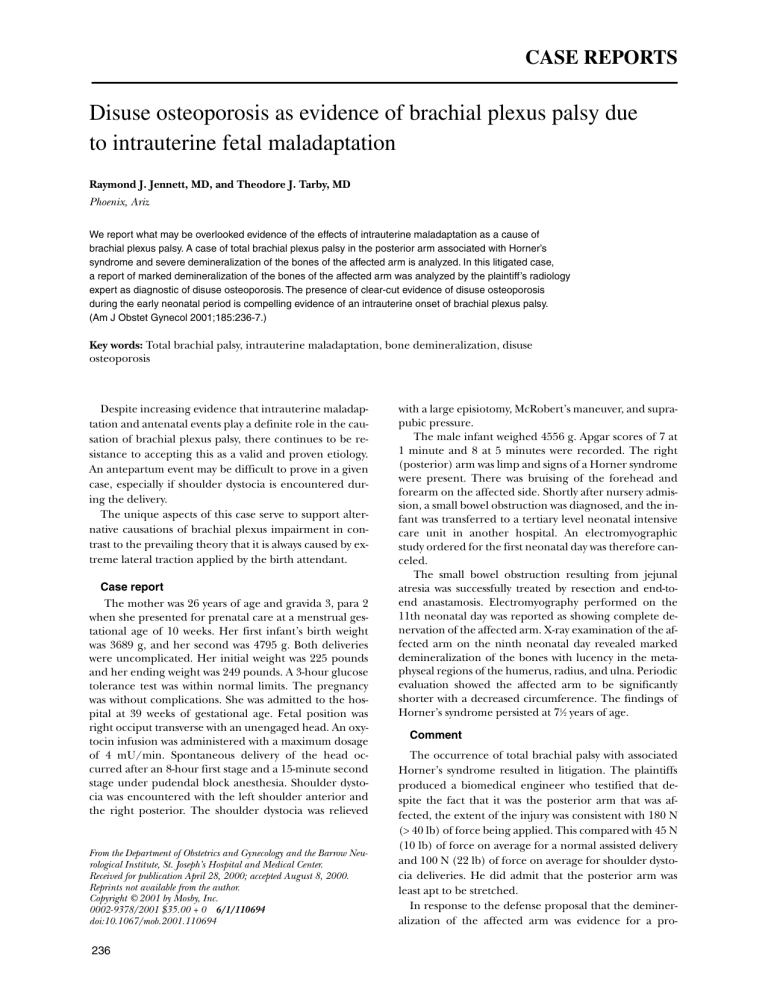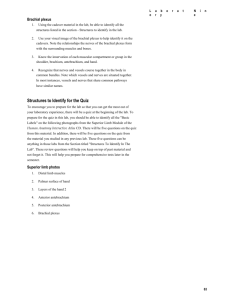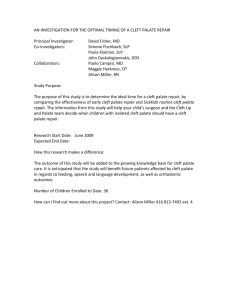Disuse osteoporosis as evidence of brachial plexus palsy due to

CASE REPORTS
Disuse osteoporosis as evidence of brachial plexus palsy due to intrauterine fetal maladaptation
Raymond J. Jennett, MD, and Theodore J. Tarby, MD
Phoenix, Ariz
We report what may be overlooked evidence of the effects of intrauterine maladaptation as a cause of brachial plexus palsy. A case of total brachial plexus palsy in the posterior arm associated with Horner’s syndrome and severe demineralization of the bones of the affected arm is analyzed. In this litigated case, a report of marked demineralization of the bones of the affected arm was analyzed by the plaintiff’s radiology expert as diagnostic of disuse osteoporosis. The presence of clear-cut evidence of disuse osteoporosis during the early neonatal period is compelling evidence of an intrauterine onset of brachial plexus palsy.
(Am J Obstet Gynecol 2001;185:236-7.)
Key words: Total brachial palsy, intrauterine maladaptation, bone demineralization, disuse osteoporosis
Despite increasing evidence that intrauterine maladaptation and antenatal events play a definite role in the causation of brachial plexus palsy, there continues to be resistance to accepting this as a valid and proven etiology.
An antepartum event may be difficult to prove in a given case, especially if shoulder dystocia is encountered during the delivery.
The unique aspects of this case serve to support alternative causations of brachial plexus impairment in contrast to the prevailing theory that it is always caused by extreme lateral traction applied by the birth attendant.
Case report
The mother was 26 years of age and gravida 3, para 2 when she presented for prenatal care at a menstrual gestational age of 10 weeks. Her first infant’s birth weight was 3689 g, and her second was 4795 g. Both deliveries were uncomplicated. Her initial weight was 225 pounds and her ending weight was 249 pounds. A 3-hour glucose tolerance test was within normal limits. The pregnancy was without complications. She was admitted to the hospital at 39 weeks of gestational age. Fetal position was right occiput transverse with an unengaged head. An oxytocin infusion was administered with a maximum dosage of 4 mU/min. Spontaneous delivery of the head occurred after an 8-hour first stage and a 15-minute second stage under pudendal block anesthesia. Shoulder dystocia was encountered with the left shoulder anterior and the right posterior. The shoulder dystocia was relieved
From the Department of Obstetrics and Gynecology and the Barrow Neurological Institute, St. Joseph’s Hospital and Medical Center.
Received for publication April 28, 2000; accepted August 8, 2000.
Reprints not available from the author.
Copyright © 2001 by Mosby, Inc.
0002-9378/2001 $35.00 + 0 6/1/110694 doi:10.1067/mob.2001.110694
236 with a large episiotomy, McRobert’s maneuver, and suprapubic pressure.
The male infant weighed 4556 g. Apgar scores of 7 at
1 minute and 8 at 5 minutes were recorded. The right
(posterior) arm was limp and signs of a Horner syndrome were present. There was bruising of the forehead and forearm on the affected side. Shortly after nursery admission, a small bowel obstruction was diagnosed, and the infant was transferred to a tertiary level neonatal intensive care unit in another hospital. An electromyographic study ordered for the first neonatal day was therefore canceled.
The small bowel obstruction resulting from jejunal atresia was successfully treated by resection and end-toend anastamosis. Electromyography performed on the
11th neonatal day was reported as showing complete denervation of the affected arm. X-ray examination of the affected arm on the ninth neonatal day revealed marked demineralization of the bones with lucency in the metaphyseal regions of the humerus, radius, and ulna. Periodic evaluation showed the affected arm to be significantly shorter with a decreased circumference. The findings of
Horner’s syndrome persisted at 7 1 ⁄
2 years of age.
Comment
The occurrence of total brachial palsy with associated
Horner’s syndrome resulted in litigation. The plaintiffs produced a biomedical engineer who testified that despite the fact that it was the posterior arm that was affected, the extent of the injury was consistent with 180 N
(> 40 lb) of force being applied. This compared with 45 N
(10 lb) of force on average for a normal assisted delivery and 100 N (22 lb) of force on average for shoulder dystocia deliveries. He did admit that the posterior arm was least apt to be stretched.
In response to the defense proposal that the demineralization of the affected arm was evidence for a pro-
Volume 185, Number 1
Am J Obstet Gynecol
Jennett and Tarby 237 longed intrauterine event, the plaintiffs engaged a radiology expert to review the case. He agreed with the observation of the hospital radiologist that there was marked demineralization of the long bones of the affected arm and pointed out that the radiolucent bands in the metaphyseal regions were diagnostic of disuse osteoporosis. However, he further stated that because he did not believe that a syndrome of intrauterine maladaptation existed, the severe demineralization must have occurred during the 9 days of neonatal life.
The radiologic characteristics of disuse osteoporosis along with an analysis of 100 cases have been described by
Jones.
1 These were persons who had their affected limb enclosed in a plaster cast for varying times and who were followed up with serial x-ray examinations. The younger the patient, the less time was taken to show the characteristic demineralization changes. The earliest onset in patients younger than 10 years of age was 7 1 ⁄
2 weeks. Even if one allows for an earlier onset in a fetus or neonate, the immobilization of the affected extremity in this reported case would be numbered in weeks.
A computer search for disuse osteoporosis in infants under 1 year of age from 1980 through 1998 yielded no reports. However, a similar case was reported by Dunn and Engle 2 in 1985. This infant had total brachial plexus palsy with an associated phrenic nerve palsy and Horner’s syndrome. The affected arm was atrophied, and decreased density of the bones was demonstrated by x-ray examination. Although no characteristic x-ray findings were included, it is reasonable to assume that this was also an instance of disuse osteoporosis.
It is important to note that this was a total (whole arm) palsy with associated Horner’s syndrome in a posterior shoulder. The possibility exists that there may be a qualitative difference from Erb’s palsy and not merely an increase in the amount of traction exerted to relieve shoulder dystocia. This will be the subject of a subsequent paper. In the meantime, x-ray examination of the affected arm, especially in cases of total palsy complemented by bone densitometry, may prove valuable in establishing a probable intrauterine onset. The widespread use (and misuse) of tabular forms in medical records makes it necessary and extremely important to add the documentation of whether the affected arm was anterior or posterior.
REFERENCES
1. Jones G. Radiological appearances of disuse osteoporosis. Clin
Radiol 1969;20:345-53.
2. Dunn DW, Engle WA. Brachial plexus palsy: intrauterine onset.
Pediatr Neurol 1985;1:367-9.







